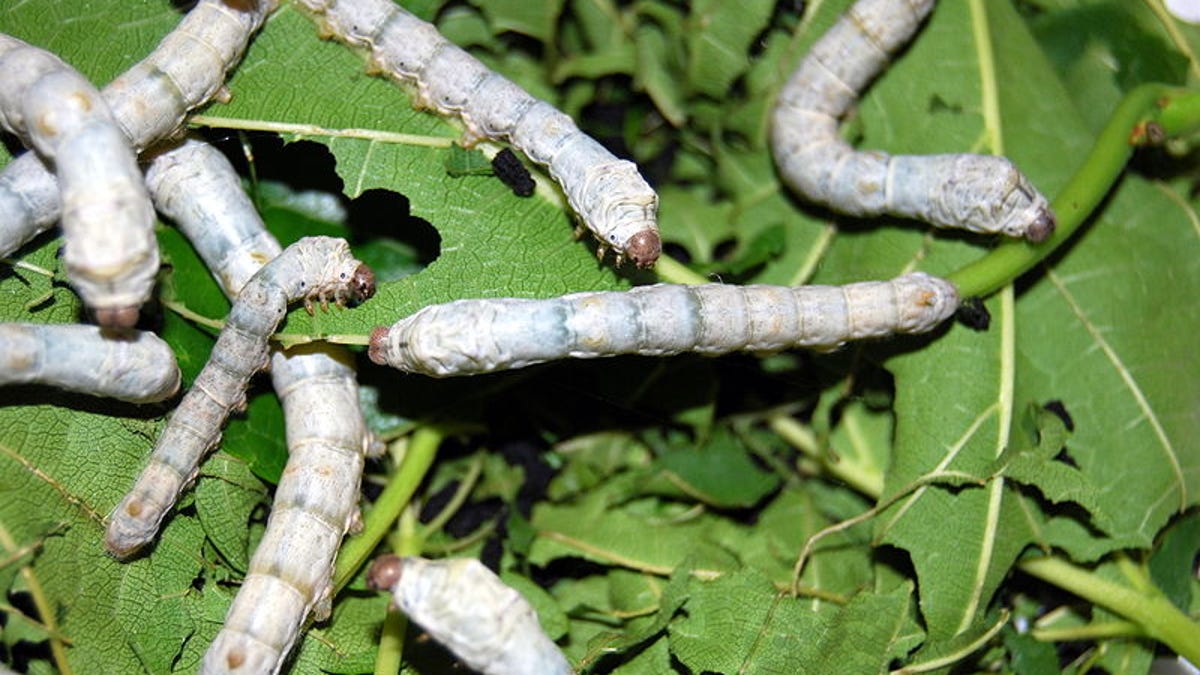Docs turn to silkworms to spin a better bone implant
Scientists from Harvard and Tufts create silk screws and plates for use in healing bone fractures. Unlike their steel counterparts, these could dissolve in the body and even be used to deliver antibiotics.
Fibers spun by the Bombyx mori silkworm have been used for thousands of years to produce soft, flowing fabrics to cloak the outsides of our bodies. Now researchers are working to put silk inside our bodies with surgical screws and plates made from B. mori cocoons.
Researchers from Tufts University and Beth Israel Deaconess Medical Center (BIDMC) drilled 28 silken screws into the femurs of laboratory rats to test their efficacy in helping bones to heal. Some of the screws were left in for eight weeks, while others stayed in for four. In both cases the screws were biocompatible (accepted by the body); did not degrade when they came in contact with bodily fluids; and had the rats up and about without showing signs of severe pain.
Results of the research were published in the March 4 issue of Nature Communications.
"Unlike metal, the composition of silk protein may be similar to bone composition," co-senior author Dr. Samuel Lin of the Division of Plastic and Reconstructive Surgery at BIDMC and associate professor of surgery at Harvard Medical School said in a statement. "Silk materials are extremely robust. They maintain structural stability under very high temperatures and withstand other extreme conditions, and they can be readily sterilized."
Lin and Dr. Ahmed Mohamed Said Ibrahim, also of Harvard, worked with Tufts Chair of Biomedical Engineering David Kaplan. Kaplan had previously developed medical sponges, foams, and fibers with silk, but this marked the first time he and his team used the material to make a medical item for repairing fractures.
According to Ibrahim, a research fellow at the Division of Plastic and Reconstructive Surgery at the Beth Israel Deaconess Medical Center arm of Harvard Medical School, the biocompatibility, strength, and flexibility of the silk implements make them superior to metallic implants currently used. "Current metallic fixation systems exhibit numerous disadvantages including extreme stiffness causing stress shielding of the underlying bone, potentially poor wound healing and plate exposure, and infection," he told Crave.
Another touted benefit of the silk implants is that they can be used to deliver antibiotics to wound sites, helping to combat infection that can accompany bone-repairing surgery. "You can load the silk solutions before molding, coat the outside surface with antibiotics after machining, or you could swell the silk with the drug, let it dry, then implant it," Ibrahim told Crave.
Still another reason why silk could trump steel for medical use is that the silk screws can dissolve in the body so that when the bones have healed, a patient isn't left housing hardware that could cause complications (and trip metal detectors at airports). According to Ibrahim, the screws he and his team made would degrade in about seven months, but future implants could be made to dissolve more quickly based on how they're manufactured.
"Typically, a healing bone callus will show up on X-ray within six weeks in adults," he said. "The strength of the healing bone is usually 80 percent of normal by three months post injury. Complete healing can take anywhere from 3 to 24 months depending on the type of bone. We are very confident the screws will last for enough time for the fracture to heal."
As if that all didn't help make the case for silk screws and plates, there's one final benefit: They don't show up on X-rays. "Because the silk screws are inherently radiolucent it may be easier for the surgeon to see how the fracture is progressing during the post-op period, without the impediment of metal devices," Lin said.
So what's next for the researchers? "Now that we have functional plates, the next step is fracture fixation in larger animal models -- we have discussed using rabbits, sheep, or pigs -- as well as release/integration studies for loading with antibiotics," Lin said. "Human trials will ensue shortly after."
Anybody up for some medical carpentry?


